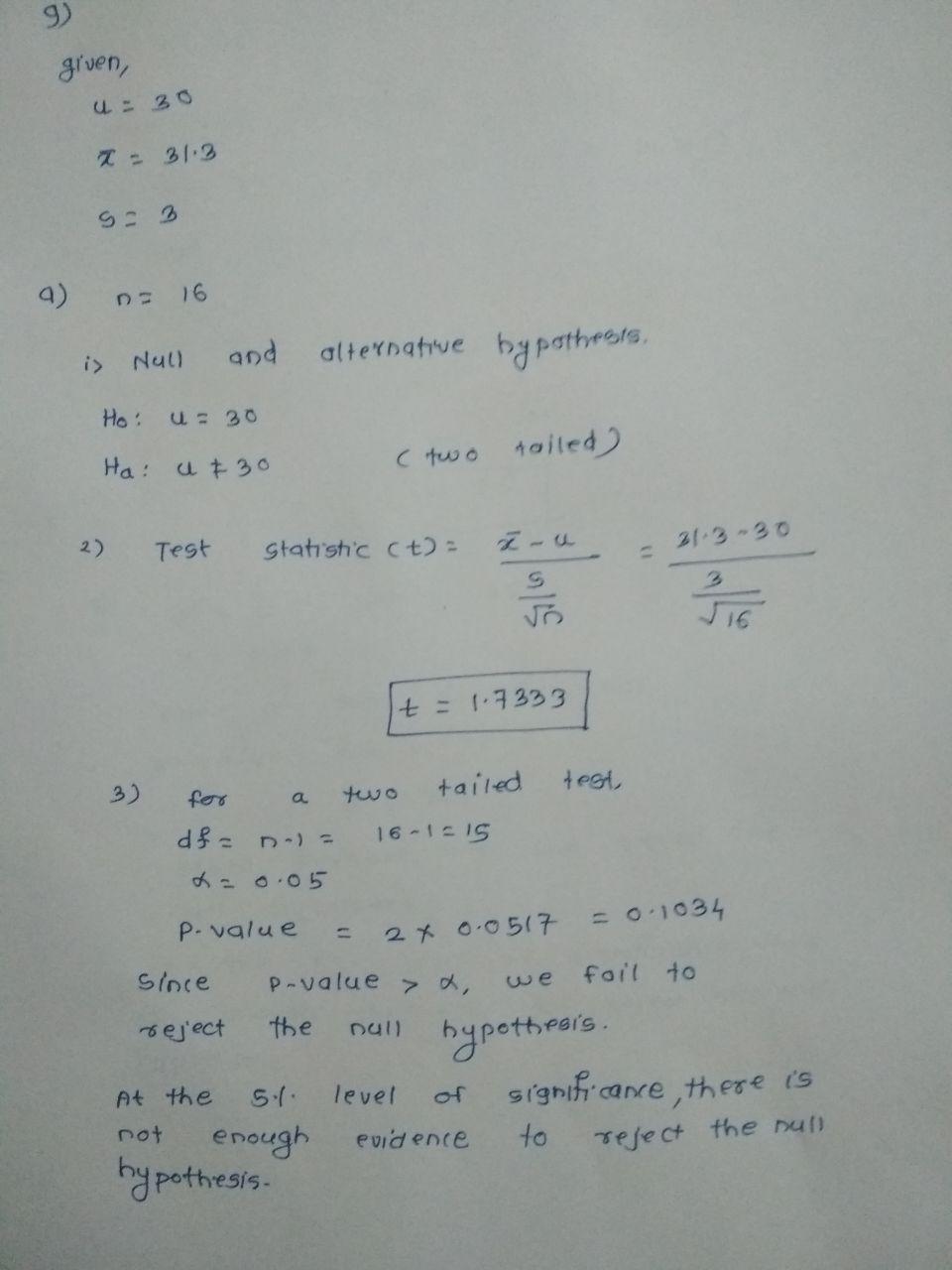9. To evaluate the effect of a treatment, a sample is obtained from a population with a mean of pu = 30, and the treatment is administered to the individuals %3D in the sample. After treatment, the sample mean is found to be M = 31.3 with a standard deviation of s = 3.
9. To evaluate the effect of a treatment, a sample is obtained from a population with a mean of pu = 30, and the treatment is administered to the individuals %3D in the sample. After treatment, the sample mean is found to be M = 31.3 with a standard deviation of s = 3.
MATLAB: An Introduction with Applications
6th Edition
ISBN:9781119256830
Author:Amos Gilat
Publisher:Amos Gilat
Chapter1: Starting With Matlab
Section: Chapter Questions
Problem 1P
Related questions
Question

Transcribed Image Text:Remember, begin with a null statement about
the independent variable ( ex: the treatment had no effect for a two tail or for a one tail, state direction, the supplement
did not decrease..) Use equal and not equal signs for two tail and use greater than and less than signs for one tail.

Transcribed Image Text:9. To evaluate the effect of a treatment, a sample is
obtained from a population with a mean of µ = 30,
and the treatment is administered to the individuals
in the sample. After treatment, the sample mean is
found to be M = 31.3 with a standard deviation of
s = 3.
a. If the sample consists of n = 16 individuals, are
the data sufficient to conclude that the treatment
has a significant effect using a two-tailed test
with a = .05?
b. If the sample consists of n = 36 individuals, are
the data sufficient to conclude that the treatment
has a significant effect using a two-tailed test
with α=.05?
c. Comparing your answer for parts a and b, how
does the size of the sample influence the outcome
of a hypothesis test?
Expert Solution
Step 1

Step by step
Solved in 3 steps with 2 images

Recommended textbooks for you

MATLAB: An Introduction with Applications
Statistics
ISBN:
9781119256830
Author:
Amos Gilat
Publisher:
John Wiley & Sons Inc

Probability and Statistics for Engineering and th…
Statistics
ISBN:
9781305251809
Author:
Jay L. Devore
Publisher:
Cengage Learning

Statistics for The Behavioral Sciences (MindTap C…
Statistics
ISBN:
9781305504912
Author:
Frederick J Gravetter, Larry B. Wallnau
Publisher:
Cengage Learning

MATLAB: An Introduction with Applications
Statistics
ISBN:
9781119256830
Author:
Amos Gilat
Publisher:
John Wiley & Sons Inc

Probability and Statistics for Engineering and th…
Statistics
ISBN:
9781305251809
Author:
Jay L. Devore
Publisher:
Cengage Learning

Statistics for The Behavioral Sciences (MindTap C…
Statistics
ISBN:
9781305504912
Author:
Frederick J Gravetter, Larry B. Wallnau
Publisher:
Cengage Learning

Elementary Statistics: Picturing the World (7th E…
Statistics
ISBN:
9780134683416
Author:
Ron Larson, Betsy Farber
Publisher:
PEARSON

The Basic Practice of Statistics
Statistics
ISBN:
9781319042578
Author:
David S. Moore, William I. Notz, Michael A. Fligner
Publisher:
W. H. Freeman

Introduction to the Practice of Statistics
Statistics
ISBN:
9781319013387
Author:
David S. Moore, George P. McCabe, Bruce A. Craig
Publisher:
W. H. Freeman